|

DONALD
TRUMP - New York
(CNN)
President-elect Donald Trump conceded Tuesday there is "some connectivity" between human activity and
climate change and wavered on whether he would pull the United States out of international accords aimed at combating the phenomenon, which scientists overwhelmingly agree is caused by human activity.
The statements could mark a softening in Trump's position on US involvement in efforts to fight climate change, although he did not commit to specific action in any direction. During the campaign, he vowed to "cancel" the US's participation in the Paris climate agreement, stop all US payments to UN programs aimed at fighting climate change and continued to cast serious doubt on the role man-made carbon dioxide emissions played in the planet's warming and associated impacts.
"I think there is some connectivity. Some, something. It depends on how much," Trump said Tuesday in a meeting with New York Times reporters, columnists and editors. He has previously called climate change a "hoax" invented by the Chinese.
Asked if he would withdraw the US from international climate change agreements, Trump said he is "looking at it very closely," according to
Times reporters Maggie Haberman and Mike Grynbaum, who were live-tweeting the meeting. He added that he has "an open mind to it," despite explicitly promising to withdraw from at least one climate accord on the campaign trail.
Still, Trump's comments do not amount to a full reversal. The President-elect on the campaign trail repeatedly vowed to slash environmental protection regulations burdening US businesses and said that beyond the consequences to the planet, he is particularly mindful of the economic impact of combating climate change.
He said he is considering "how much it will cost our companies" and the effect on American competitiveness in the global market, according to a tweet from
Grynbaum.
Trump's election sparked concerns from climate change activists that the incoming Republican president will roll back the progress made under the
Obama administration.
President Barack Obama made inroads with other countries
- China in particular - toward new international agreements to roll back global carbon emissions, progress activist groups have worried will be undone by a Trump presidency.
"The disaster that Donald Trump represents for the climate cannot be understated," Jamie Henn, a spokesman for 350.org, an environmental advocacy group, told CNN last week. "He is the only head of state in the world who is an all-out climate denier and he has the most radical, anti-environmental policies of anyone to ever assume the role of the presidency."
While Trump's comments on Tuesday may suggest an ambivalence - if not a softening
- on the issue of climate change, the President-elect's actions suggest his election did not cause him to immediately abandon his climate skepticism.
Trump appointed a leading climate change denier Myron Ebell to lead his transition efforts on the Environmental Protection Agency and has not stepped back from his vow to slash environmental regulations he argued during the campaign are an undue burden on US businesses.
"Whether or not Trump acknowledges the connection between human pollution and climate change, the science is real. Climate change is happening, and fossil fuels are making it worse,"
Greenpeace USA spokesman Travis Nichols said. "No matter what he says, Trump's 100 days plan and his proposed Cabinet appointees put climate denial front and center in his administration and put the
planet and its people at risk."
By Jeremy
Diamond, CNN
WHAT
IS FOOD SECURITY?
The final report of the 1996 World Food Summit states that food security:
"exists when all people, at all times, have physical and economic access to sufficient, safe and nutritious food to meet their dietary needs and food preferences for an active and healthy life".
Without
food and energy security, the world becomes unstable and potentially
volatile - sometimes leading to armed
conflict. This is a situation that
is untenable. Climate change is responsible for serious famine around the
world - and that cannot be ignored if we are aiming for sustainable, circular
economies and peace.
HOW
CAN SEAVAX HELP?
If
it is true that the fish in our oceans are declining at the rate of 0.8%
per year since 1970, then significant numbers of clean running ocean filtration
machines could make a significant contribution to restoring a healthy
environment for fish to breed in. We are developing a low cost system that
every country in the world could afford to operate - and eventually reap
the rewards of better food security. SeaVax can even be adapted to be a
fishing boat designed to produce low cost fish meal - but that is way in
the future. For now we simply want to fight against the build up of ocean
plastic. Read about what the experts have to say below and you might agree
with us that we should all pull together to conserve what we have. We are
hoping that this will include big hitters like President Trump.
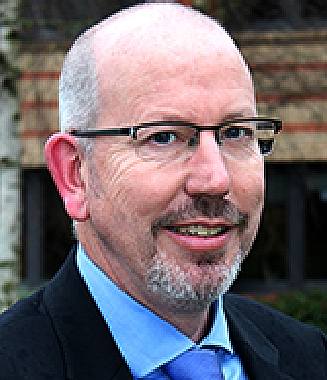
31 OCT 2016 TIM BENTON
- The Global Food Security programme’s Champion, Professor Tim Benton, reflects on leaving the role after five years in the post.
After five years, my term as the Champion for the UK’s Global Food Security programme has come to an end. It has been a fascinating and rewarding experience, even if at times exhausting and frustrating. So what have I learned?
The issue of food security is not (just) about food, it is about how we choose to live on a planet with limited resources. Food requires land and water and affects climate, biodiversity and our health. The amount of land and water available are finite, as is the climate impact we can tolerate, and the healthcare costs of the malnourished (underweight and overweight).
THE
WORLD BANK:
The world needs to produce at least 50% more food to feed 9 billion people by 2050. But climate change could cut crop yields by more than 25%. The land, biodiversity, oceans, forests, and other forms of natural capital are being depleted at unprecedented rates. Unless we change how we grow our food and manage our natural capital, food
security - especially for the world’s poorest - will be at risk.
Already, volatile food prices - and the price spikes that can result - are the new normal. When faced with high food prices, many poor families cope by pulling their children out of school and eating cheaper, less nutritious food. This can have severe life-long effects on the social, physical, and mental well-being of millions of young people. Malnutrition contributes to infant, child, and maternal illness; decreased learning capacity; lower productivity, and higher mortality. One-third of all child deaths globally are attributed to under-nutrition.
Investment in agriculture and rural development to boost food production and nutrition is a priority for the World Bank Group. The Bank Group works with partners to improve food security and build a food system that can feed everyone, everywhere, every day. Activities include encouraging climate-smart farming techniques and restoring degraded farmland, breeding more resilient and nutritious crops and improving storage and supply chains for reducing food losses.
Mar 21, 2016
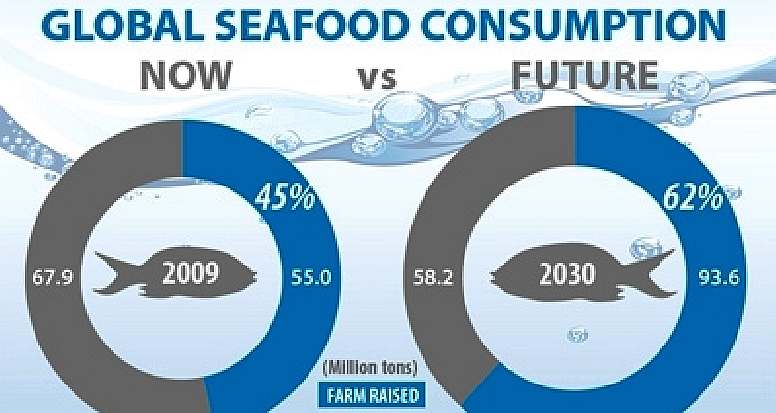
WB
ON AQUACULTURE
* A new World Bank report estimates that in 2030, 62% of the seafood we eat will be farm-raised to meet growing demand from regions such as Asia, where roughly 70% of fish will be consumed. China will produce 37% of the world’s fish, while consuming 38% of world’s food fish.
* By producing more seafood that is affordable and rich in nutrition, aquaculture can help improve food security and livelihoods for the world’s poorest.
* The rise in seafood demand gives countries the opportunity to expand and improve responsible fish and shellfish farming practices.
Nearly two-thirds of the seafood we eat will be farm-raised in 2030. This is according to
"Fish to 2030: Prospects for Fisheries and Aquaculture," which concludes that as sources from wild capture fisheries approach their maximum take,
aquaculture
- or fish farming - will help satisfy the growing global appetite for fish and seafood.
The new World Bank report projects that in 2030, aquaculture will produce half of the world’s supply of fish, including fish for food and other products such as fishmeal.
Meanwhile, 62% of the seafood that will end up on people’s plates will come from fish farms, which will grow production to meet rising demand
- especially from Asia, where roughly 70% of fish will be consumed. In 2030, an emerging middle class in China will become a particularly large market for fish. With increased investment in aquaculture, China will produce 37% of the world’s fish and consume 38% of the fish the world eats, the report estimates.
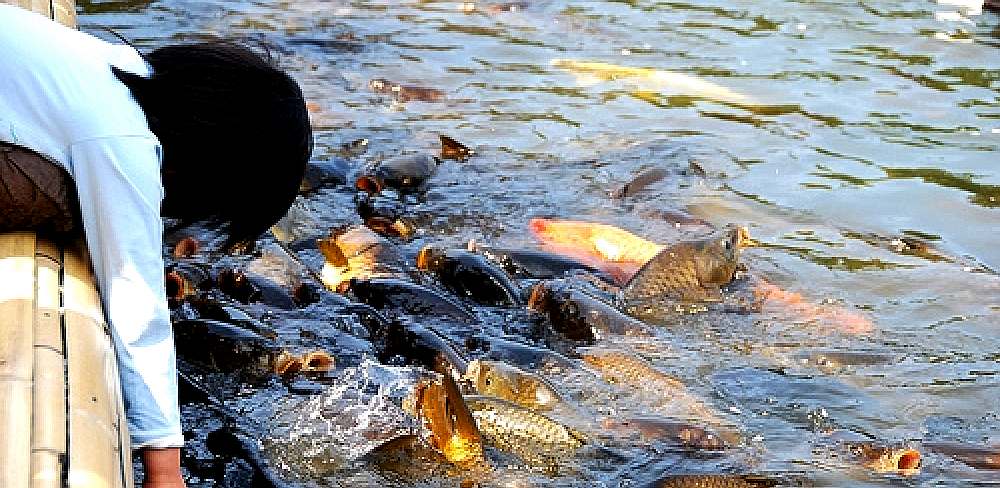
Juergen Voegele (Director, Agriculture and Environmental Services, World Bank Group):
"Making aquaculture sustainable - As the global population inches towards nine billion by 2050, there will be a need for more food and
jobs - which a growing aquaculture industry can help meet. But it needs to be practiced responsibly.
The risks and environmental impacts of some aquaculture practices have made headlines in recent years. The disease outbreaks in shrimp aquaculture in
China, Thailand and
Vietnam and in salmon farming in Chile illustrate some of the industry’s challenges. But the growth of aquaculture also presents countries with the opportunity to expand and improve fish farming so that it is sustainable and environmentally-responsible.
“We continue to see excessive and irresponsible harvesting in capture fisheries, and in aquaculture, disease outbreaks, among other things, have heavily impacted production,” says Juergen Voegele, Director of Agriculture and Environmental Services at the World Bank. “There is a major opportunity for developing countries that are prepared to invest in better fisheries management and environmentally sustainable aquaculture.”
“Aquaculture will be an essential part of the solution to global food security. We expect the aquaculture industry to improve its practices in line with expectations from the market for sustainable and responsibly produced seafood,” says Jim Anderson, Bank Advisor on Fisheries, Aquaculture and Oceans and co-author of the report."

Jim Anderson (Co-author; Advisor on Fisheries, Aquaculture and Oceans, World Bank Group)
"Responsible aquaculture around the world - Keen to benefit from the economic and environmental advantages of sustainable aquaculture, many countries are helping their communities improve the way they produce fish.
Since May 2012, Vietnam has been working with the World Bank to help fishing communities adopt good fish farming practices to better manage disease and improve waste management. Sustainable aquaculture is also being developed in Ghana, which has begun to establish fish farms in the Volta Lake region.
As the population grows, aquaculture is emerging as one way to satisfy the world’s demand for fish. But a lot of work is needed to improve the way aquaculture is practiced. According to Voegele, “It’s a big challenge, but the World Bank can help developing countries in their efforts to manage their fish production sustainably, through tailored and innovative solutions that work.”
By committing to improved aquaculture practices, countries can deliver nutritious fish to more people while being mindful of environmental impact.
Download the report to learn more about “Fish to 2030: Prospects for Fisheries and Aquaculture.”
Leading experts in environmental economics with the World Bank Group (WBG), the Food and Agriculture Organization of the
United Nations (FAO) and the International Food Policy Research Institute (IFPRI) contributed to this report. The report is an update to an earlier study entitled "Fish to 2020."
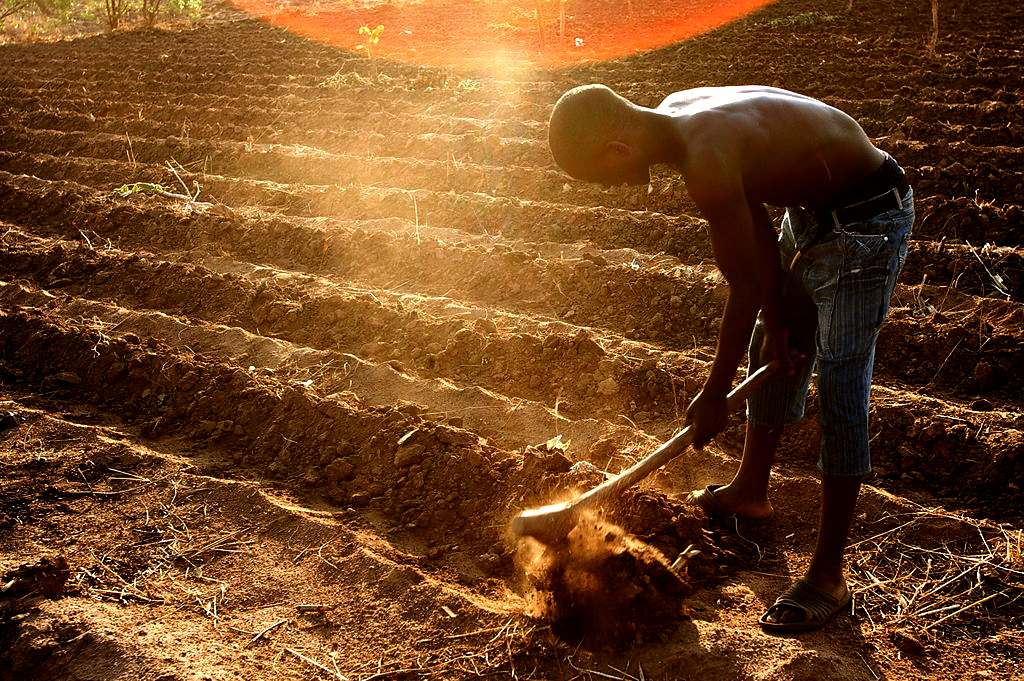
CLIMATE CHANGE
Extreme events, such as droughts and floods, are forecast to increase as climate change and global warming takes hold.[68] Ranging from overnight floods to gradually worsening droughts, these will have a range of effects on the agricultural sector. By 2040, almost the entire Nile region, which once included large areas of irrigated agricultural land, is expected to become hot desert where cultivation is impossible due to water limitation. According to the Climate & Development Knowledge Network report Managing Climate Extremes and Disasters in the Agriculture Sectors: Lessons from the IPCC SREX Report, the effects will include changing productivity and livelihood patterns, economic losses, and effects on infrastructure, markets and food security. Food security in future will be linked to our ability to adapt agricultural systems to extreme events. For example, the Garifuna women in Honduras are helping to ensure food security locally by reviving and improving production of traditional root crops, building up traditional methods of soil conservation, carrying out training in organic composting and pesticide use and creating the first Garifuna farmers' market. Sixteen towns have worked together to establish tool and seed banks. Efforts to plant wild fruit trees along the coast are helping to prevent soil erosion. The aim is to reduce the communities' vulnerability to the hazards of shifting weather patterns.
Approximately 2.4 billion people live in the drainage basin of the Himalayan rivers. India, China, Pakistan, Afghanistan, Bangladesh, Nepal and Myanmar could experience floods followed by severe droughts in coming decades. In India alone, the Ganges provides water for drinking and farming for more than 500 million people. The west coast of North America, which gets much of its water from glaciers in mountain ranges such as the Rocky Mountains and Sierra Nevada, also would be affected. Glaciers aren't the only worry that the developing nations have; sea level is reported to rise as
climate change progresses, reducing the amount of land available for agriculture.
In other parts of the world, a big effect will be low yields of grain according to the World Food Trade Model, specifically in the low latitude regions where much of the developing world is located. From this the price of grain will rise, along with the developing nations trying to grow the grain. Due to this, every 2–2.5% price hike will increase the number of hungry people by 1%. Low crop yields are just one of the problem facing farmers in the low latitudes and tropical regions. The timing and length of the growing seasons, when farmers plant their crops, are going to be changing dramatically, per the USDA, due to unknown changes in soil temperature and moisture conditions.
Another way of thinking about food security and climate change comes from Evan Fraser, a geographer working at the University of Guelph in Ontario
Canada. His approach is to explore the vulnerability of food systems to climate change and he defines vulnerability to climate change as situations that occur when relatively minor environmental problems cause major effects on food security. Examples of this include the Irish Potato Famine, which was caused by a rainy year that created ideal conditions for the fungal blight to spread in potato fields, or the Ethiopian Famine in the early
1980s. Three factors stand out as common in such cases, and these three factors act as a diagnostic "tool kit" through which to identify cases where food security may be vulnerable to climate change. These factors are: (1) specialized agro-ecosystems; (2) households with very few livelihood options other than farming; (3) situations where formal institutions do not provide adequate safety nets to protect people.
The International Food Policy Research Institute (IFPRI) estimates that an additional US$ 7.1-7.3 billion per year are needed in agricultural investments to offset the negative effect of climate change on nutrition for children by 2050.
FOSSIL FUELS
While agricultural output increased as a result of the Green Revolution, the energy input into the process (that is, the energy that must be expended to produce a crop) has also increased at a greater rate, so that the ratio of crops produced to energy input has decreased over time. Green Revolution techniques also heavily rely on chemical fertilizers, pesticides and herbicides, some of which must be developed from fossil fuels, making agriculture increasingly reliant on petroleum products.
Between 1950 and 1984, as the Green Revolution transformed agriculture around the globe, world grain production increased by 250%. The energy for the Green Revolution was provided by fossil fuels in the form of fertilizers (natural gas), pesticides (oil), and hydrocarbon fueled irrigation.
David Pimentel, professor of ecology and agriculture at Cornell University, and Mario Giampietro, senior researcher at the National Research Institute on Food and Nutrition (INRAN), place in their study Food, Land, Population and the U.S. Economy the maximum U.S. population for a sustainable economy at 200 million. To achieve a sustainable economy and avert disaster, the United States must reduce its population by at least one-third, and world population will have to be reduced by two-thirds, says the study.
The authors of this study believe that the mentioned agricultural crisis will only begin to affect us after 2020, and will not become critical until 2050. The oncoming peaking of global
oil production (and subsequent decline of production), along with the peak of North American natural gas production will very likely precipitate this agricultural crisis much sooner than expected. Geologist Dale Allen Pfeiffer claims that coming decades could see spiraling food prices without relief and massive starvation on a global level such as never experienced before.
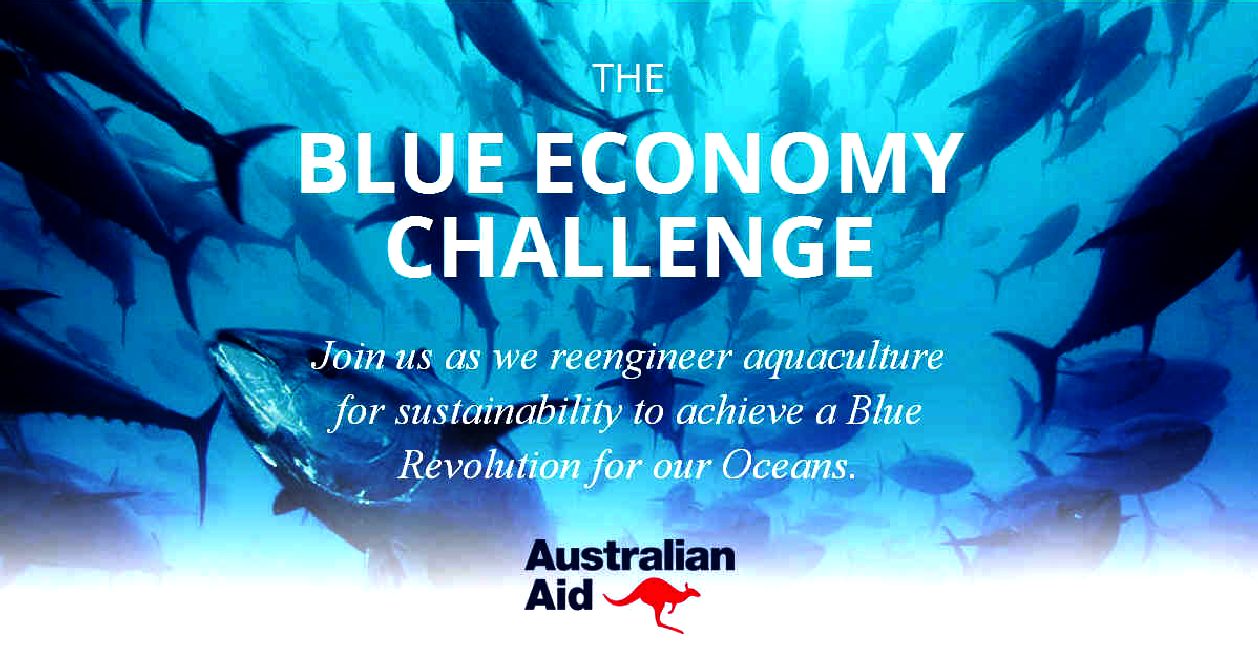
WHAT
IS THE BLUE ECONOMY CHALLENGE (TBEC)?
POPULATION GROWTH ESTIMATES
Current UN projections show a continued increase in population in the near future (but a steady decline in the population growth rate), with the global population expected to reach between 8.3 and 10.9 billion by 2050. UN Population Division estimates for the year 2150 range between 3.2 and 24.8 billion; mathematical modeling supports the lower estimate. Some analysts have questioned the sustainability of further world population growth, highlighting the growing pressures on the environment, global food supplies, and energy resources. Solutions for feeding the nine billion in the future are being studied and documented. One out of every seven people on our planet go to sleep hungry. People are suffering due to overpopulation, 25,000 people die of malnutrition and hunger related diseases everyday.
LAND USE CHANGE
China needs not less than 120 million hectares of arable land for its food security. China has recently reported a surplus of 15 million hectares. On the other side of the coin, some 4 million hectares of conversion to urban use and 3 million hectares of contaminated land have been reported as well. Furthermore, a survey found that 2.5% of China's arable land is too contaminated to grow food without harm. In Europe, the conversion of agricultural soil implied a net loss of potential. But the rapid loss in the area of arable soils appears to be economically meaningless because EU is perceived to be dependent on internal food supply anymore. During the period 2000-2006 the European Union lost 0.27% of its cropland and 0.26% of its crop productive potential. The loss of agricultural land during the same time was the highest in the Netherlands, which lost 1.57% of its crop production potential within six years. The figures are quite alarming for Cyprus (0.84%),
Ireland (0.77%) and Spain (0.49%) as well. In
Italy, in the Emilia-Romagna plain (ERP), the conversion of 15,000 ha of agricultural soil (period 2003-2008) implied a net loss of 109,000 Mg per year of wheat, which accounts for the calories needed by 14% of ERP population (425,000 people). Such a loss in wheat production is just 0.02% of gross domestic product (GDP) of the Emilia-Romagna region which is actually a minor effect in financial terms. Additionally, the income from the new land use is often much higher than the one guaranteed by agriculture, as in the case of urbanisation or extraction of raw materials.
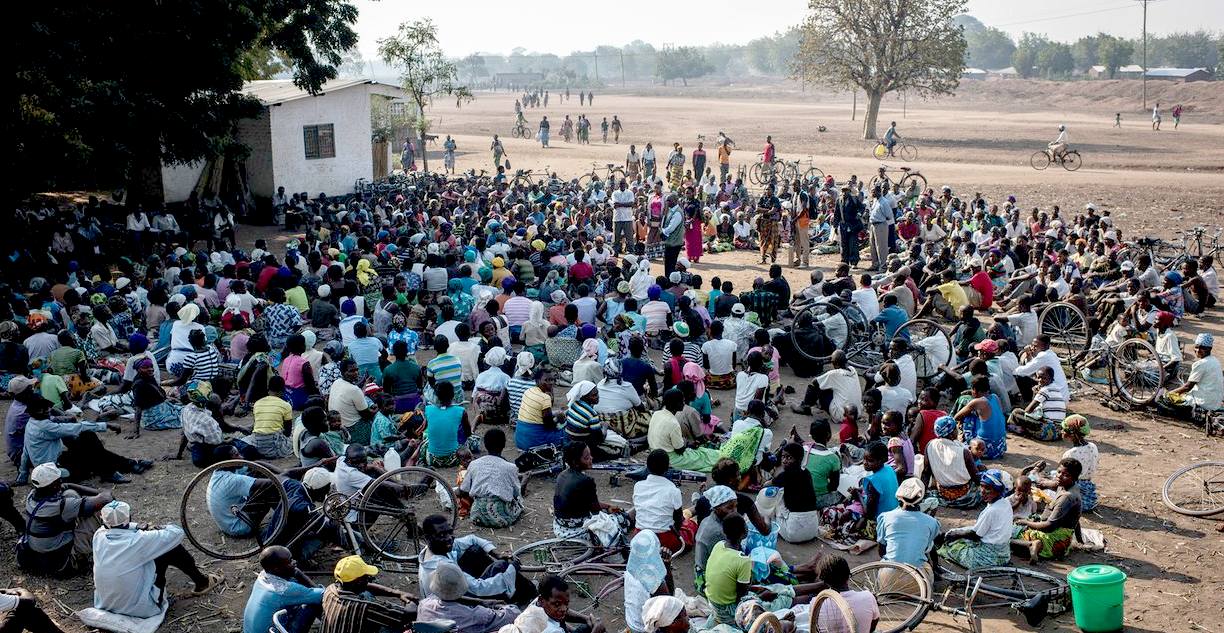
THE GUARDIAN
17 NOV 2016 - Up to 122 million more people worldwide could be living in extreme poverty by 2030 as a result of climate change and its impacts on small-scale farmers’ incomes, a major UN report warned on Monday.
Climate change is “a major and growing threat to global food security”, said the report, warning that it could increase the global population living in extreme poverty by between 35 and 122 million by 2030, with farming communities in sub-Saharan Africa among the hardest hit.
The 2016 State of Food and Agriculture report, published by the Rome-based Food and Agriculture Organisation (FAO), calls for “deep transformations in agriculture and food systems” and for the world’s half-billion small-scale farms to receive particular support.
The report warns that without “widespread adoption of sustainable land, water, fisheries and forestry practices, global poverty cannot be eradicated”.
It adds that action must also be taken to reduce farming’s own contributions to greenhouse gas emissions and global warming.
The 194-page report looks at the future of farming and food security under different climate change scenarios. It also looks at possible responses to what it calls “an unprecedented double challenge” to eradicate hunger and poverty and stabilise the global climate.
There is, it says, “no doubt that climate change will affect the agriculture sectors and food security and that its negative impact will become more severe as it accelerates. In some particularly vulnerable places, such as small islands or in areas affected by large-scale extreme weather and climate events, the impact could be catastrophic.”
In a best-case scenario, slow-moving climate change would allow farming to adapt through relatively simple techniques, at least in the near future. But it warns that more abrupt changes would make adequate adaptation almost impossible.
Possible consequences include major declines in crop yields and increasingly high and volatile food prices, it says. “In the longer run, unless measures are put in place to halt and reverse climate change, food production could become impossible in large areas of the world.”
The report cites diversifying crop production, better integration of farming with the natural habitat, agroecology and “sustainable intensification” as strategies to help small-scale farmers adapt to a warming world.
It says some current policies, including subsidies for inputs such as synthetic fertilisers and pesticides, could hinder the adoption of more sustainable techniques.
“Social protection programmes will need to play an important role – in helping smallholders better manage risk, reducing vulnerability to food price volatility, and enhancing the employment prospects of rural people who leave the land,” it adds.
The report comes as delegates arrive in Rome for the 43rd Committee on World Food Security meetings.
On Friday, the FAO’s director general, José Graziano da Silva, warned: “Higher temperatures and erratic weather patterns are already undermining the health of soils, forests and oceans on which agricultural sectors and food security depend. We have seen an increase of pest and disease outbreaks everywhere.”
In a special message on Friday,
Pope Francis said the world should draw on “the wisdom of rural communities” and “a style of life that can help defend us from the logic of consumerism and production at any cost, a logic that … [is] aimed solely at the increase in profit”.
Technologies including genetic modification “may give excellent results in the laboratory, may be advantageous for some, but have ruinous effects for others”, he argued.
Ertharin Cousin, executive director of the World Food Programme, said: “Climate change is already stretching the international humanitarian system … more than 80% of the world’s hungry live in areas prone to natural disasters and environmental degradation. Climate change is not waiting – neither can we.”
Until 2030, says the FAO report, climate change impacts will produce both gains and losses, with crop yields increasing in colder places, for example. After 2030, negative impacts could threaten farming and food systems in every region of the world.
In September 2015, UN member states agreed to eradicate extreme poverty and end hunger by 2030 as part of the sustainable development goals.
In December, world leaders signed the
Paris agreement, which sets a framework for national action and international cooperation on climate change.
Monday’s report argues that now is the time for these political commitments to be put into action.
It notes that agriculture and related land use alone accounts for at least one-fifth of global greenhouse-gas emissions – and that this must also be addressed.
Globally, about one-third of all food produced is also lost or wasted. Reducing this figure could limit farming’s impact on natural resources and emissions, it says.
“‘Business as usual’ is not an option,” stressed Graziano da Silva in a foreword to the report. “Agriculture has always been the interface between natural resources and human activity. Today it holds the key to solving the two greatest challenges facing humanity: eradicating poverty, and maintaining the stable climatic corridor in which civilisation can thrive.”
by Claire Provost
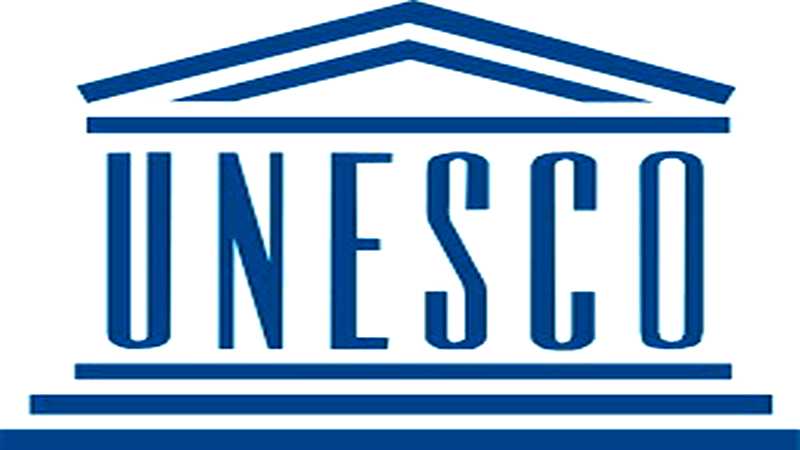
DAILY
TIMES 24 NOVEMBER 2016
RAWALPINDI: A three-day international conference on "Asia-Pacific Policy Dialogue on Water, Energy and Food Security for
Poverty Alleviation in Dry Regions'' commenced at Pir Mehr Ali Shah Arid Agriculture University (PMAS-AAUR), here on Wednesday.
PMAS-AAUR works in collaboration with UNESCO with the support of
Japan Funds-in-Trust and Malaysia Funds-in-Trust, organised the conference aimed at providing opportunity to policy makers, scientists, academicians, other experts and stakeholders for exploring new dimensions to increase water, food security and alleviate poverty in the resource deficient dry land regions worldwide, in Asia particularly in Pakistan.
Federal Minister for Parliamentary Affairs Sheikh Aftab Ahmad was the chief guest at the inaugural session of the conference while Japan's Ambassador Takashi Kurai, High Commissioner of Malaysia Dr. Hasrul Sani Bin Mujtabar, AJK Finance Minister, Planning and Development and Public Health, Dr. Muhammad Najeeb Naqi, UNESCO Director
Jakarta Dr. Shahbaz Khan, PMAS-AAUR Vice Chancellor Prof. Dr. Rai Niaz Ahmad, UNESCO Islamabad Director Ms. Vibeke Jensen,
Water Expert Dr. Shams-ul-Mulk and progressive farmer Mumtaz Khan attended the conference.
Over 200 participants from Pakistan and other countries including 50 delegates from Malaysia, Indonesia, Japan, China, the
Philippines,
Nepal, Korea, Afghanistan,
Australia and faculty members and a large number of students were also present.
The minister addressing the participants said, the government had put water,
energy and food security on the top development agenda in its vision 2025 because these sectors are considered to be the lifeline of any economy and the most vital instrument for socio-economic development of the country.
He said, the government was paying special attention on hydro-electric projects like Diamir Basha Dam and others to make the country self-sufficient in the energy sector.
He informed that changing climatic conditions, especially the natural disasters, resource base degradation, poverty, low education levels and high disparities in food access are major challenges for food security in
Pakistan.
He informed the gathering that universities are a hub of research and innovation of new technologies positively impacting livelihood of the masses, protecting environment and accelerating growth.
He appreciated PMAS-AAUR efforts to cultivate resources in a beneficial manner like rainwater harvesting model, energy production from solid waste, initiatives to promote 21st century agriculture through hydroponic technology and development of skills of young graduates are especially commendable.
He urged the participants to discuss the thematic areas and propose policy guidelines and strategies for effective use of resources to ensure water, energy and food security.
He hoped that this conference would help in facilitating the integration of the newly adopted Sustainable Development Goals into national the development plans of Pakistan and other countries of Asia Pacific Region.
Earlier, Prof. Dr. Rai Niaz Ahmad in his welcome address highlighted the aims and objectives of the conference.
The VC informed the gathering that the university is dealing in diversified areas like agriculture, forestry, range management, veterinary and animal sciences, agricultural engineering, basic, applied and social sciences along with management sciences and information technology to achieve a stipulated target of the UN Agenda 2030 and the Pakistan Government vision 2025 to respond to the ever changing socio-economic conditions and attaining the
goal of development.
The ambassador of Japan appreciated efforts of UNESCO and PMAS-AAUR for holding an international conference on an important topic, saying Japan has been providing assistance to Pakistan in various fields.
He said, our priorities were implementation of the universal agenda, adding, Japan was putting its efforts for quality growth, health system,
education, disaster management and
climate change.
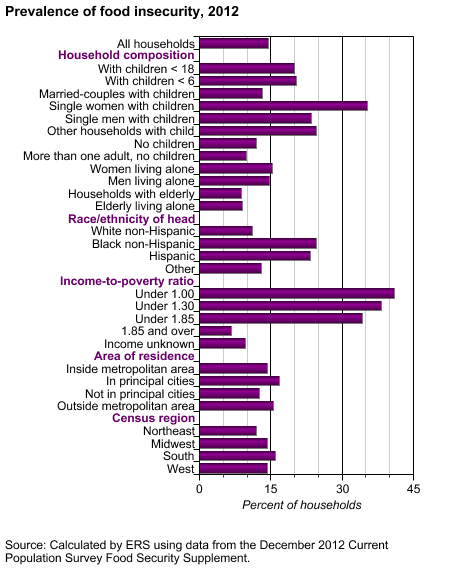
National Food Security Surveys
- are the main survey tool used by the USDA to measure food security in the United States. Based on respondents' answers to survey questions, the household can be placed on a continuum of food security defined by the USDA. This continuum has four categories: high food security, marginal food security, low food security, and very low food security. Economic Research Service report number 155 (ERS-155) estimates that 14.5 percent (17.6 million) of US households were food insecure at some point in 2012. The prevalence of food insecurity has been relatively in the United States since the economic recession 2008. In 2012:
* 49.0 million people lived in food-insecure households.
* 12.4 million adults lived in households with very low food security.
* 8.3 million children lived in food-insecure households in which children, along with adults, were food
insecure.
* 977,000 children lived in households in which one or more child experienced very low food security.
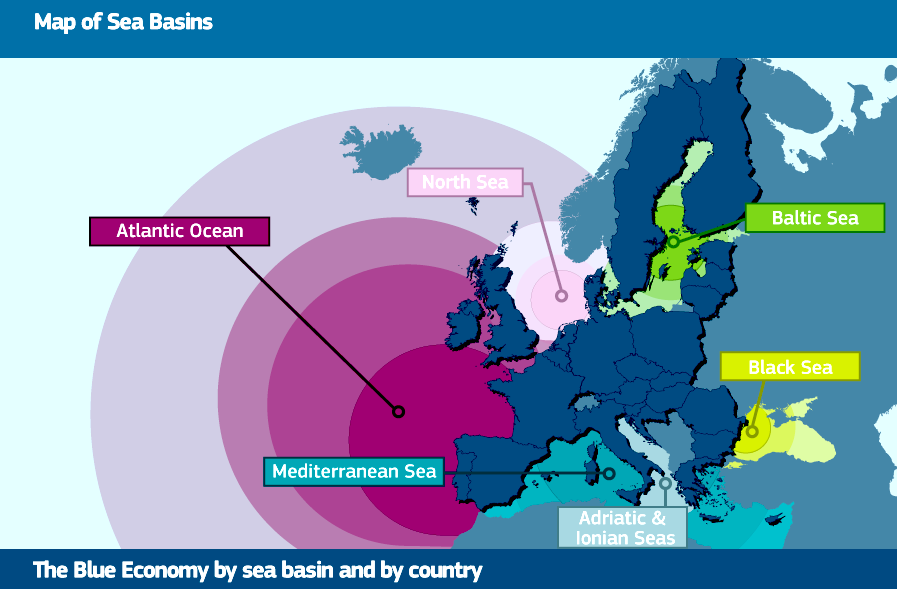
HUFFINGTON POST SEPT 2016
- Blue Growth by Design - An Ocean of Opportunity
Awaits
CHILDREN & FOOD SECURITY
On April 29, 2008, a UNICEF UK report found that the world's poorest and most vulnerable children are being hit the hardest by climate change. The report, "Our Climate, Our Children, Our Responsibility: The Implications of
Climate Change for the World's Children", says that access to clean water and food supplies will become more difficult, particularly in
Africa and Asia.
By way of comparison, in one of the largest food producing countries in the world, the
United
States, approximately one out of six people are "food insecure", including 17 million children, according to the U.S. Department of Agriculture. A 2012 study in the Journal of Applied Research on Children found that rates of food security varied significantly by race, class and education. In both kindergarten and third grade, 8% of the children were classified as food insecure, but only 5% of white children were food insecure, while 12% and 15% of black and Hispanic children were food insecure, respectively. In third grade, 13% of black and 11% of Hispanic children are food insecure compared to 5% of white children.
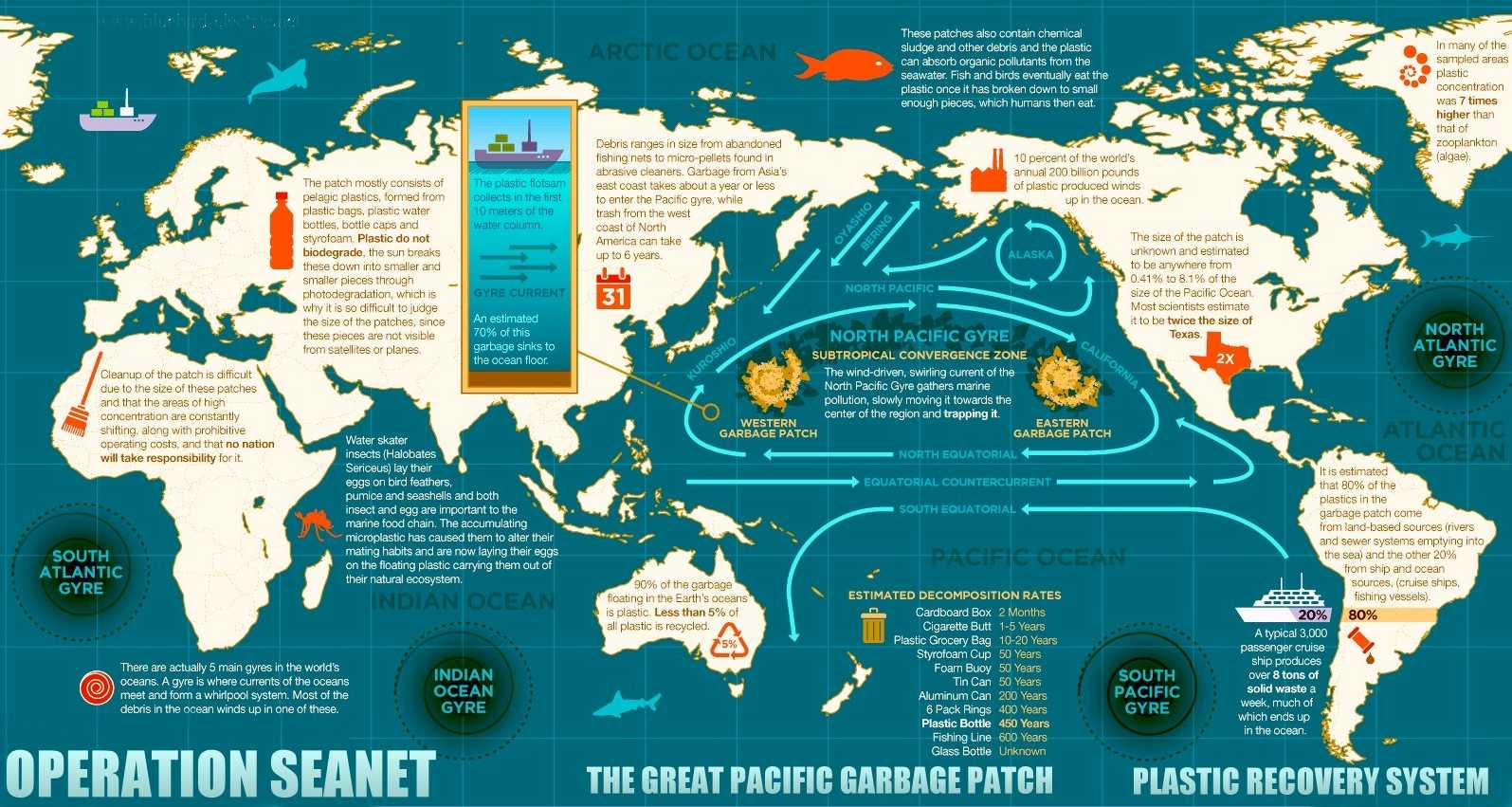
The
North
Pacific gyre is just one of several swirling trash zones (gyres) in
our oceans, and it's where a lot of our plastic litter ends up. While
these debris patches aren't visible piles of floating trash in the water,
they are inverted mountains - a bit like landfill sites at sea - hidden
from view. The reality of what they are and how they got there is mind
boggling and extremely harmful to marine life. We can't (at the moment) do
much about nuclear waste in the oceans (except appeal to reason), but we
can act to vacuum
up solids.
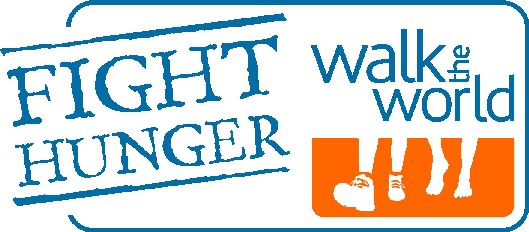
WFP
- The World Food Programme is the food assistance branch of the United Nations and the world's largest humanitarian organization addressing hunger and promoting food security. According to the WFP, it provides food assistance to an average of 80 million people in 75 countries each year. From its headquarters in Rome and more than 80 country offices around the world, the WFP works to help people who are unable to produce or obtain enough food for themselves and their families. It is a member of the United Nations Development Group and part of its Executive Committee.
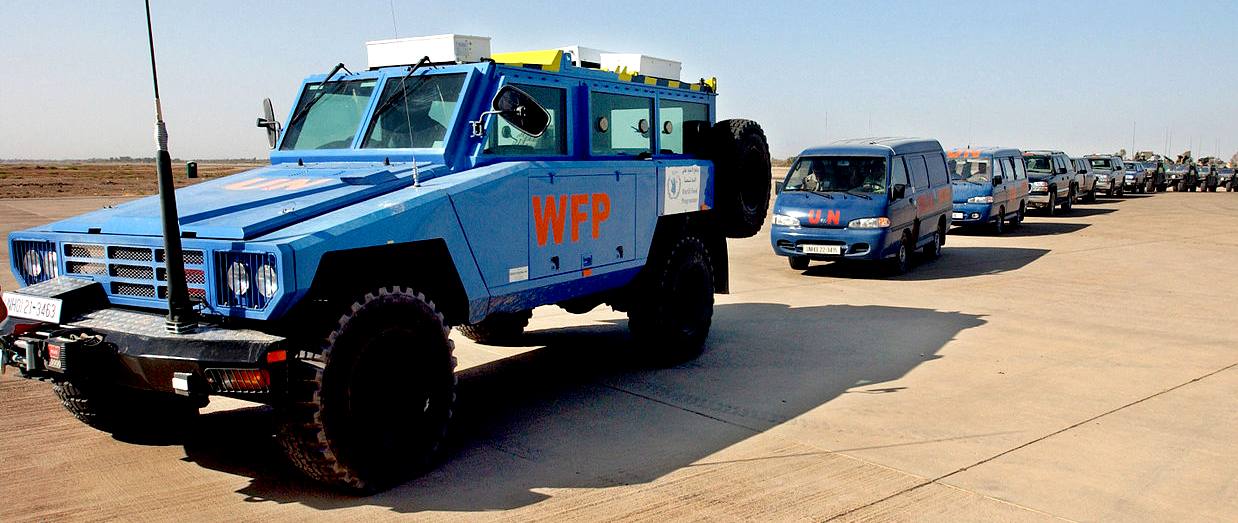
ABOUT
THE WFP - The WFP was first established in 1961 after the 1960 Food and Agricultural Organization (FAO) Conference, when George McGovern, director of the US Food for Peace Programmes, proposed establishing a multilateral food aid programme. The WFP was formally established in 1963 by the FAO and the United Nations General Assembly on a three-year experimental basis. In 1965, the programme was extended to a continuing basis.
The WFP is governed by an Executive Board which consists of representatives from 36 member states. Ertharin Cousin is the current Executive Director, appointed jointly by the UN Secretary General and the Director-General of the FAO for a five-year term. She heads the Secretariat of the WFP. The European Union is a permanent observer in the WFP and, as a major donor, participates in the work of its Executive Board.
Its vision is a "world in which every man, woman and child has access at all times to the food needed for an active and healthy life." The WFP has a staff of about 11,500 people, the majority of whom work in remote areas.
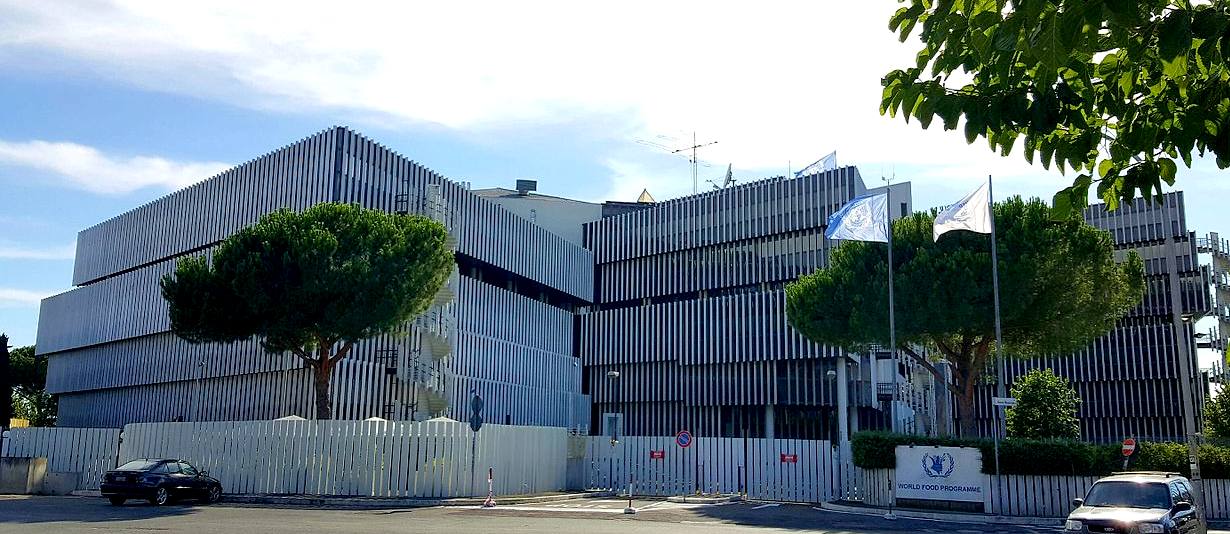
WFP
ACTIVITIES - In 2013, the WFP reached 80.9 million people in 75 countries and provided 3.1 million tonnes of food, including nutritionally improved products such as Plumpy'sup, Plumpy'doz, and Supercereal Plus. 7.8 million malnourished children received special nutritional support in 2013, and 18.6 million children received school meals or take-home rations.
The WFP has scaled up its use of cash and vouchers as food assistance tools. 7.9 million people received assistance through cash or voucher programmes in 2013. In the same year, the WFP purchased food in 91 countries; 86 percent of that food came from developing countries.
Among its other activities, the WFP has coordinated the five-year Purchase for Progress (P4P) pilot project. Launched in September 2008, P4P assists smallholder
farmers by offering them opportunities to access agricultural markets and to become competitive players in the market place. The project spanned across 20 countries in Africa, Asia and Latin America and trained 800,000 farmers in improved agricultural production, post-harvest handling, quality assurance, group marketing, agricultural finance and contracting with the WFP. The project resulted in 366,000 metric tons of food produced and generated more than $148 million in income for its smallholder farmers.
The WFP focuses its food assistance on those who are most vulnerable to hunger, which most frequently means women, children, the sick and the elderly. In fact, part of the response to the 2010 Haiti earthquake consisted of distributing food aid only to women as experience built up over almost 5 decades of working in emergency situations has demonstrated that giving food only to women helps to ensure that it is spread evenly among all household members. School-feeding and/or take-home ration programmes in 71 countries help students focus on their studies and encourage parents to send their children, especially girls, to school.
WORLD SECURITY SUMMIT ON FOOD SECURITY
The World Summit on Food Security held in Rome in 1996, aimed to renew a global commitment to the fight against hunger. The Food and Agriculture Organization of the United Nations
(FAO) called the summit in response to widespread under-nutrition and growing concern about the capacity of agriculture to meet future food needs. The conference produced two key documents, the Rome Declaration on World Food Security and the World Food Summit Plan of Action.
The Rome Declaration calls for the members of the United Nations to work to halve the number of chronically undernourished people on the Earth by the year 2015. The Plan of Action sets a number of targets for government and non-governmental organizations for achieving food security, at the individual, household, national, regional and global levels.
Another World Summit on Food Security took place in Rome between November 16 and 18, 2009. The decision to convene the summit was taken by the Council of FAO in June 2009, at the proposal of FAO Director-General Dr Jacques
Diouf. Heads of State and Government attended the summit, which took place at the FAO's headquarters.
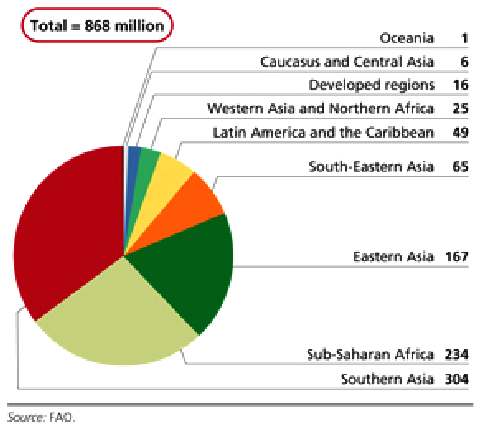
ACIDIFICATION
- ADRIATIC
- ARCTIC
- ATLANTIC - BALTIC
- BAY BENGAL - BERING
- CARIBBEAN - CORAL - EAST
CHINA
ENGLISH CH
-
GOC - GUANABARA
- GULF
GUINEA - GULF
MEXICO
- INDIAN
-
IRC - MEDITERRANEAN -
NORTH SEA - PACIFIC
- PERSIAN GULF - SEA
JAPAN
STH
CHINA - PLASTIC
- PLANKTON - PLASTIC
OCEANS - SEA
LEVEL RISE - UNCLOS
- UNEP
WOC
- WWF
AMAZON
- BURIGANGA - CITARUM - CONGO - CUYAHOGA
-
GANGES - IRTYSH
- JORDAN - LENA -
MANTANZA-RIACHUELO
MARILAO
- MEKONG - MISSISSIPPI - NIGER - NILE - PARANA - PASIG - SARNO - THAMES
- YANGTZE - YAMUNA - YELLOW
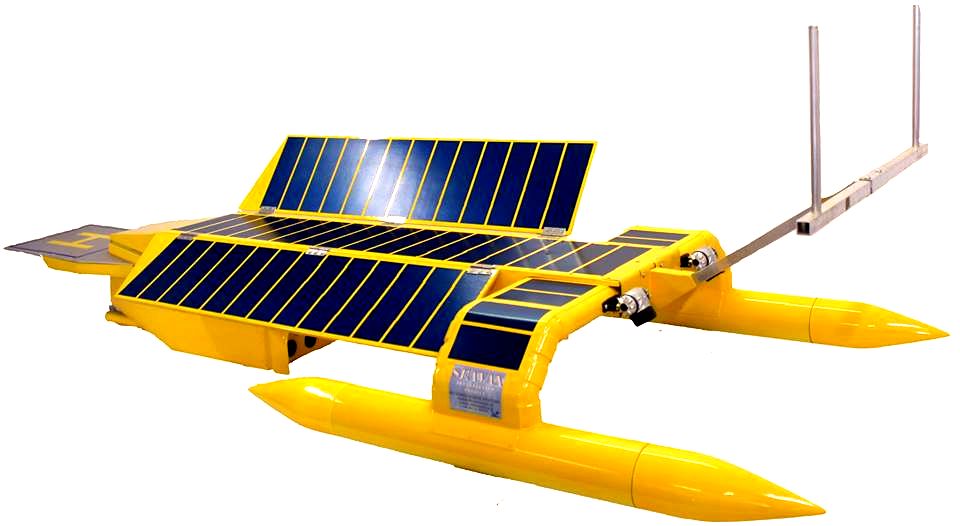
FOOD
SECURITY LINKS
& REFERENCE
Biotechnology and Biological Sciences Research Council
(BBSRC).
Polaris House
North Star Avenue
Swindon
Wiltshire
SN2 1UH
United Kingdom
Tel: +44 1793 413200
http://edition.cnn.com/2016/11/22/politics/donald-trump-climate-change-new-york-times/ https://en.wikipedia.org/wiki/World_Food_Programme https://en.wikipedia.org/wiki/Food_security https://www.theguardian.com/global-development/food-security http://www.cargill.com/corporate-responsibility/food-security/ http://dailytimes.com.pk/islamabad/24-Nov-16/moot-mulls-over-ways-to-ensure-water-food-security-and-alleviation-of-poverty http://www.worldbank.org/en/topic/foodsecurity/ http://www.foodsecurity.ac.uk/

SEAVOLUTION - The
key to healthy oceans is continuous monitoring of them and constant plastic
patrols,
for which the SeaVax ZCC (Zero Carbon Cruiser) platform, a concept under development, is a robotic ocean
workhorse that holds the potential to provide a partial solution to food
security.
The SeaVax concept is based on a stable
trimaran
hull design that is under development in the UK.


TORCH
PENS
- These pens are available in pink and teal in support of our SeaVax
"Feed The World" project. They have polished hard chrome barrels
and colored caps with our bird logo engraved into the cap. They have soft
silicone rubber tips for your mobile phone and computer touch screens and
a built in LED torch at the opposite end - ideal for conferences,
theatres, clubs or doing your homework when the lights are low. They come
complete with batteries and gift boxes if this is a present for a loved
one.
|

















